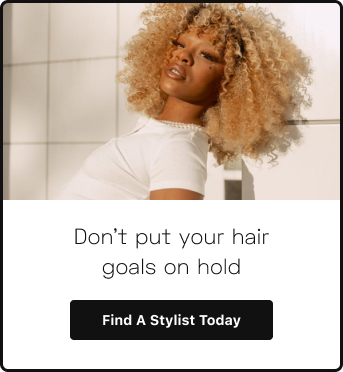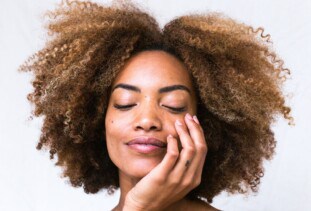Hair care is a little more complicated than it seems. How you achieve healthy hair not only depends on what hair products you use — it also depends on your hair texture.
Different hair types need to be cared for differently. The hair typing system classifies hair into types by number, using three letters (a, b, and c) to describe the subcategories:
- Type 1 hair is “straight,” or hair with no curls.
- Type 2 hair is “wavy,” or hair with a soft curl.
- Type 3 hair is “curly,” ranging from looser curls to springy corkscrew curls.
- Type 4 hair is “coily,” with the tightest curls and more defined ringlets.
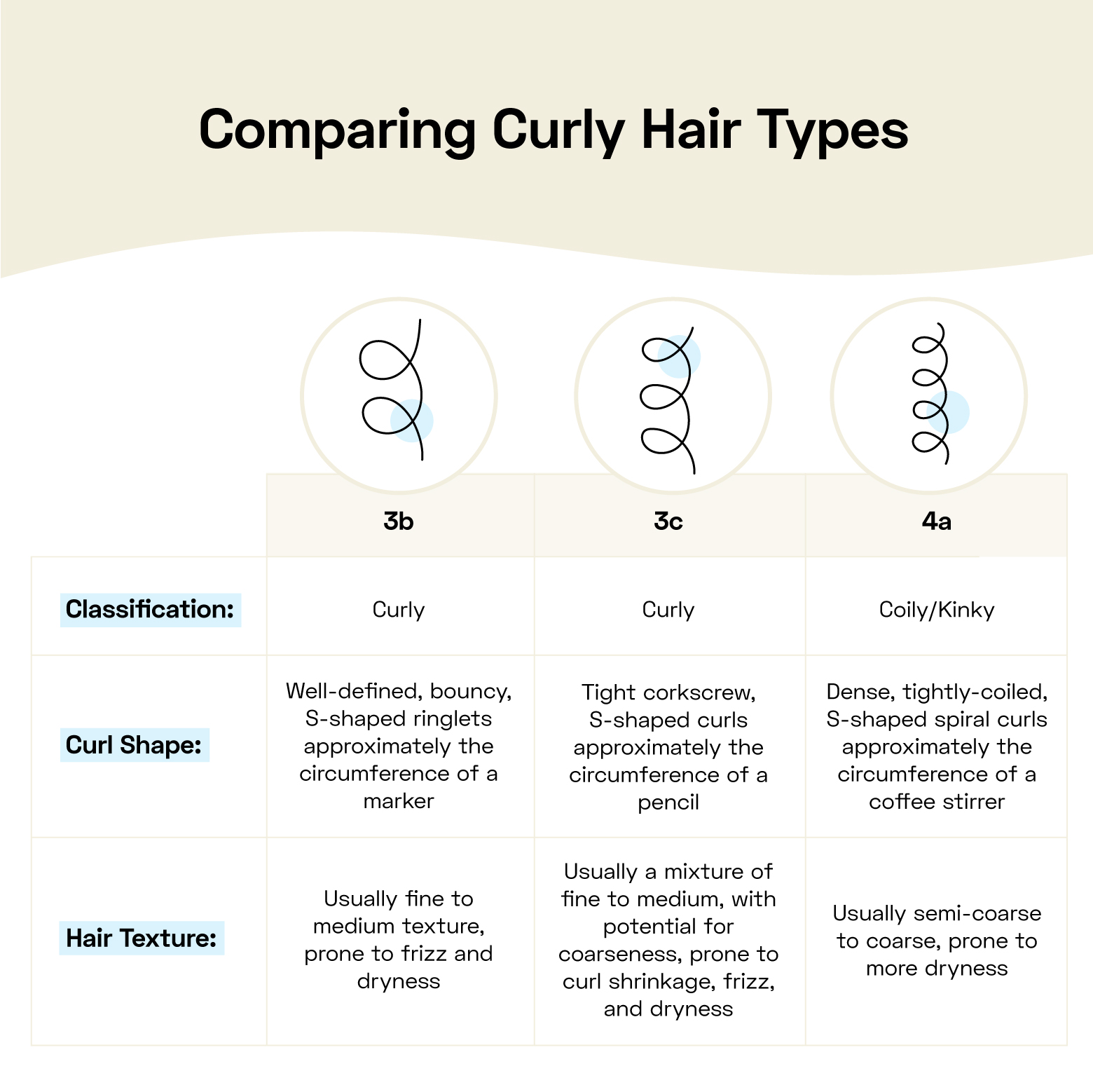
Having a 3c hair type, a subcategory of hair type 3, means that your hair texture has lots of tight coils and strands packed together that create volume. Type 3 hair generally has curls in an “S” shape, and, in 3c hair, they’re usually wound into tight corkscrews or coils that keep the shape even when stretched out.
In this article, we go over what 3c hair is, and give you some styling and care tips to take with you on your hair journey.
What Is 3c Hair?
Type 3, or “curly” hair, can include a variety of hair textures, ranging from a light curl to well-defined, tight ringlets. 3c, also called “curly-coily,” is the densest of the curly hair type. Corkscrew curls in 3c hair tend to be about the width of a pencil or straw, and are tightly packed together, creating thick texture and volume.
While 3c hair experiences the most volume of the curly hair types, it can also experience shrinkage, which is when your natural hair decreases in length from when it’s wet to when it dries. Every hair type, for the most part, experiences some shrinkage, but the extent depends on your hair texture and hair porosity. Shrinkage is what helps create the tightly wound curl.
How to Determine Your Curl Type
Determining your curl type can be a little tricky, and it’s common for people to have multiple types. 3c hair specifically has characteristics of both curly and coily hair.
Here are some ways to try to figure out your curl type:
- Analyze your hair when it’s wet. If your hair is curly, it will look wavy when wet, and shrink by at least 25% when it’s fully dry.
- Consider the shape of your curls. Each subtype has its own characteristic curl. Are they loose “S” waves or tightly wound coils?
- Look at your hair texture. The more tightly packed and voluminous your strands are, the more likely it is that your hair falls at the end of the curly range.
What is the Difference Between 3c Hair vs. 3b Hair?
Though both have well-defined curls, the main difference between 3b and 3c hair is the circumference of the curl. While 3c curls are small, about the width of a pencil, in 3b hair, they’re about the width of a permanent marker. 3b hair has a medium curl, usually a mix of both more loose and tighter strands.
What is the Difference Between 3c Hair vs. 4a Hair?
3c hair and 4a hair both have small, tight curls, but the curls in 3c hair tend to be wider. The curls in 4a hair are smaller, and the hair type, overall, is less dense, with a coarser hair texture, so maintaining it may look a bit different.
How to Care for 3c Hair
Every hair type has its own special hair care needs. Here are some care tips for how to maintain your 3c hair.
Wash Day Routine for 3c Hair
How you wash your hair can have a surprising impact on your hair health. Wash day routines will vary from person to person, based on your specific hair care needs, but here’s a general idea of how to wash 3c hair.
1. Start with Detangling Before Your Shower
Dry detangling your hair means working out some or all tangles or matting before you wet your hair. You can do this with your fingers or a wide tooth comb. You may want to start detangling before you step into the shower because wetness and products like shampoo may increase tangles or encourage breakage in already-tangled hair.
However, test what works for you. You may find that lightly detangling your hair while it’s dry and then wet detangling with a brush after conditioning is the best way to get the tangles out.
Remember to start at the ends and work towards the roots when detangling.
2. Wash and Massage Your Scalp with Moisturizing Shampoo
Using moisturizing shampoo on your 3c hair helps to avoid dehydration.
You may want to use clarifying shampoo once or twice a month. It helps wash away the buildup from oils or residue from styling products without stripping away moisture, helping restore bounce and shine to your curls.
3. Work Conditioner Through Your Hair and Detangle Curls
3c hair is usually low porosity, meaning it repels moisture, so it’s more prone to dryness. Conditioner can help you not only gently detangle your curls but also help you hydrate more intensely and keep dry hair at bay. Segment your hair into multiple sections and rake the conditioner through with your fingers. You may also want to use a wet detangling brush at this time.
4. Style with Specific Products for Your Hair Type
Finding the right products (and application methods) for your hair will take trial and error. After washing your hair, try a hair oil or leave-in conditioner to lock in moisture. Then add a styling cream, hair butter or hair jelly. These products help with curl definition. If you’re new to a natural curly routine, your instinct may be to use products sparingly. However, you typically need to saturate your strands for desired definition and hold.
5. Use a Heat-Free Drying Method to Dry Hair
Excessive heat use can be damaging to all types of hair, but especially to a delicate hair type like 3c. Instead, after applying your products you can let your hair air-dry and help define your curls with plopping and finger curling. Just don’t touch your hair too much as it’s drying, or you might end up frizzy.
General Care and Maintenance for 3c Hair
People with curly hair will have different hair care routines, but we’ve highlighted some care tips for maintaining your 3c curls between washes.
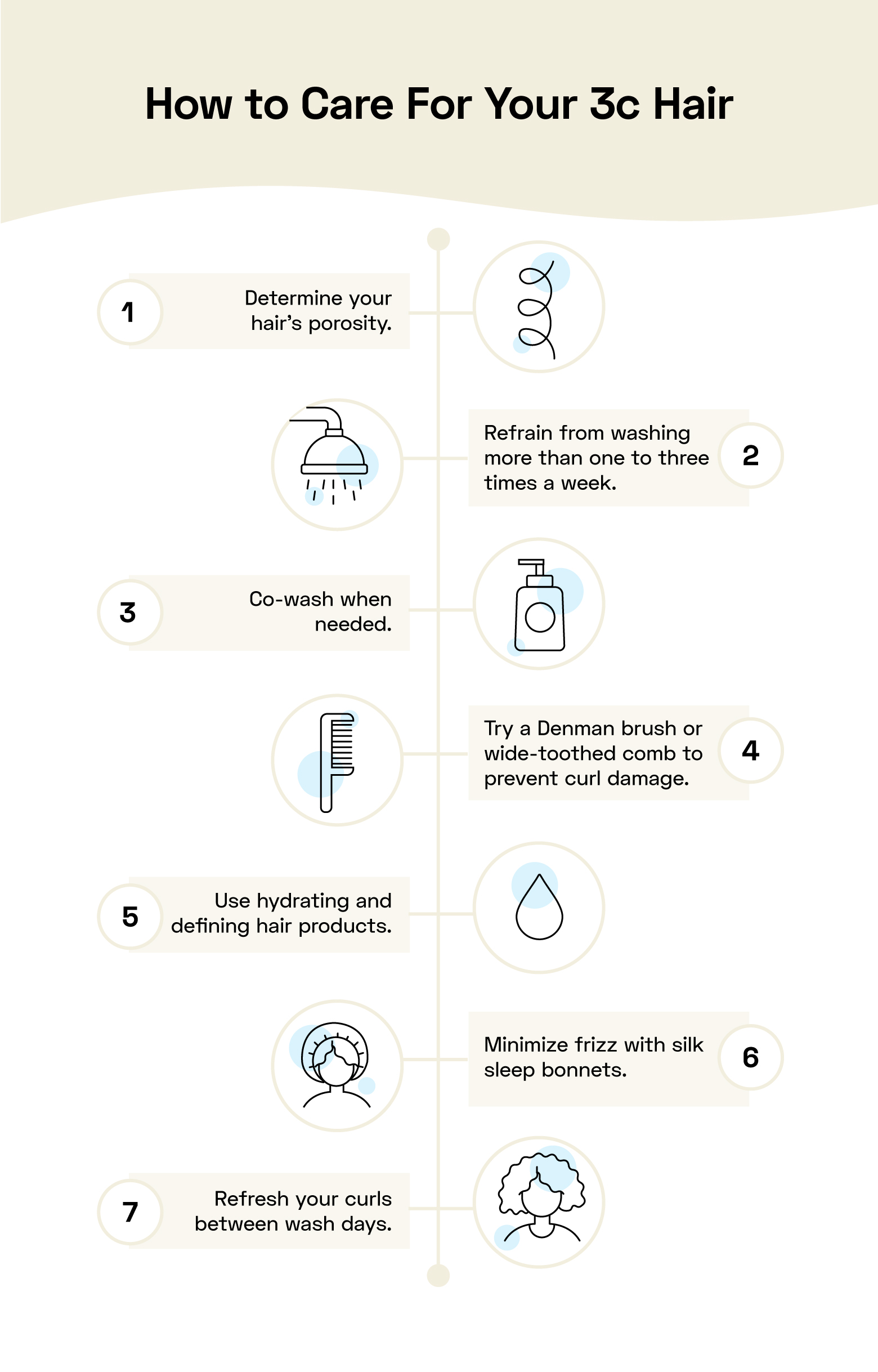
Determine Your Hair’s Porosity
Knowing your hair porosity is important for how you treat it. An easy way to determine your hair’s porosity is to take some loose strands and drop them into a glass of water. Low porosity hair floats, while high porosity hair sinks.
High porosity hair tends to hydrate more easily and absorb more product than hair with low porosity. Knowing what porosity your hair has will help you determine if you need products like deep conditioners. Generally, 3c hair is low porosity and benefits from conditioning, even between washes.
Refrain From Washing More Than One to Three Times a Week
Washing your hair strips away its natural oils. While you need to wash your hair to avoid dullness and buildup, overwashing can lead to dry hair and breakage. Delicate hair like 3c should only be washed a few times a week at most.
Co-wash Your Hair When Needed
Co-washing, using conditioner in place of shampoo, can benefit 3c hair, especially if your hair texture is on the dry or more delicate side. The ingredients in shampoo tend to strip away your natural oils, in the same way they take out dirt and buildup. Swapping out a couple of shampoo washes with co-washes can help you cleanse your hair without stripping it.
Try a Denman Brush or Wide-Toothed Comb to Prevent Curl Damage
Not all brushes are created equal. Some encourage breakage in curly hair, while others are more equipped to gently detangle well-defined curls. A Denman brush is specifically designed for curly hair, helping to amplify curls, create ringlets, and increase definition. A wide-toothed comb is another good styling tool, helping you tame tangles without breakage.
Use Hydrating and Curl Defining Hair Products
Styling products designed for curly hair help bring out the best features of your hair texture. Conditioning with deep conditioning products or leave-in conditioners promotes hair hydration, while products like mousses can help define your curls.
Minimize Frizz with Silk Sleep Bonnets
A silk sleep bonnet is a soft cap you wear before you go to bed and wear around your hair at night. By covering your hair as you sleep, it helps protect it from getting frizzy or damaged, which can happen as you toss and turn. It also keeps your curl shape more intact.
Refresh Your Curls Between Wash Days
To refresh your curls between wash days, you can use styling products like curl refreshers.ry a volumizing foam product and finger-curling to help your curls regain their bounce. Some leave-in products that you applied during wash day can be reactivated by lightly misting your curls with warm water, without the need for a full wash.
Best Hairstyles for 3c Hair
Styling your hair is as important for hair health as how you wash and maintain it. Here are some hairstyles for 3c hair that not only help protect and care for your hair but also help bring out its natural beauty.
Sleek and Curly Ponytail
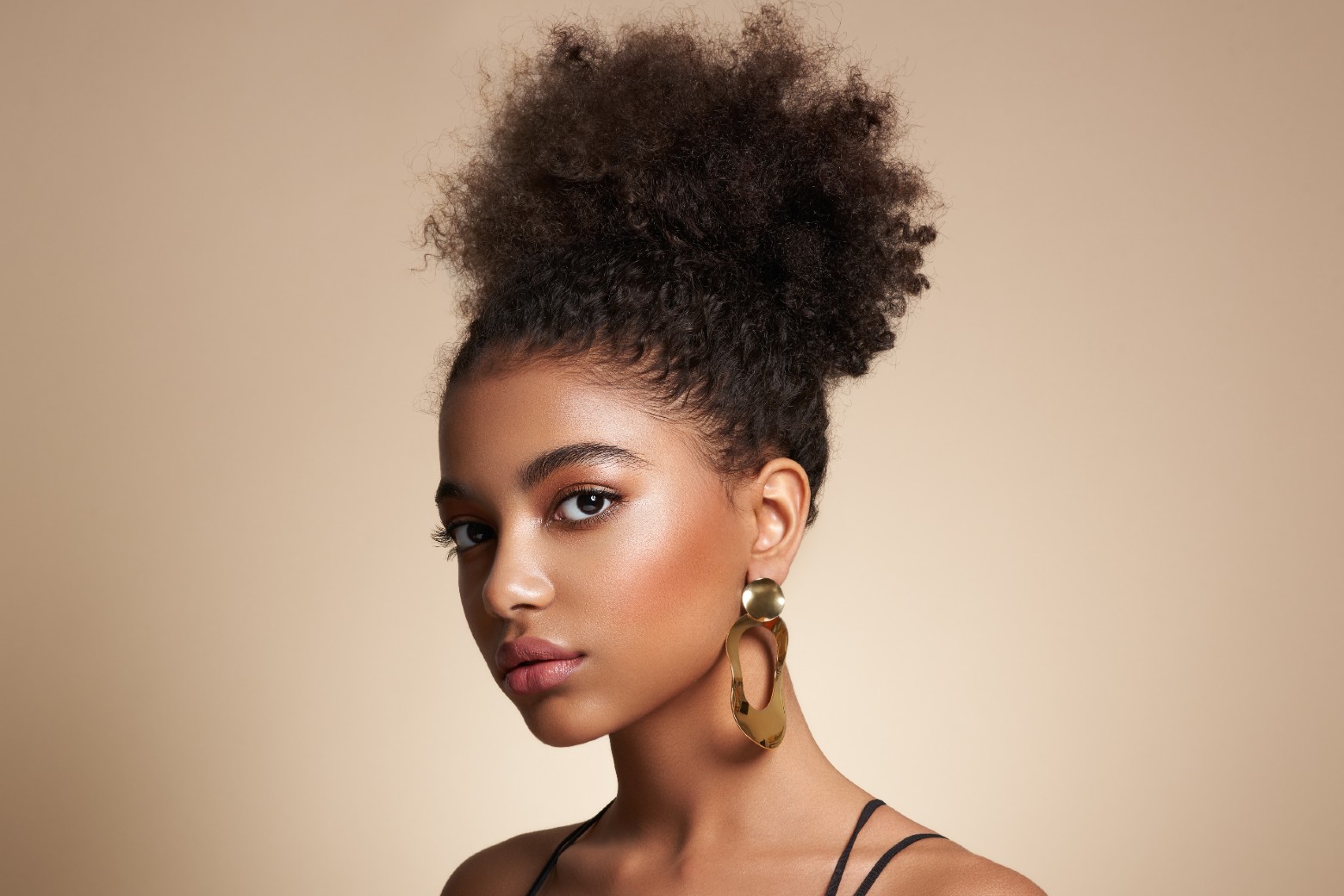
The contrast of sleek, slicked down hair with the texture of your natural curls highlights the volume and definition of your natural hair texture. Use hair gel to slick your hair down to your scalp and mousse and multi-benefit spray to tame and define your curls.
Simple Accessory Accents

From headbands to clips to bandanas, hair accessories are a fun way to express yourself, and an easy way to upgrade your look in a flash. Treat your strands with curl-defining cream, and load up on your favorite accessories.
Double Puffs
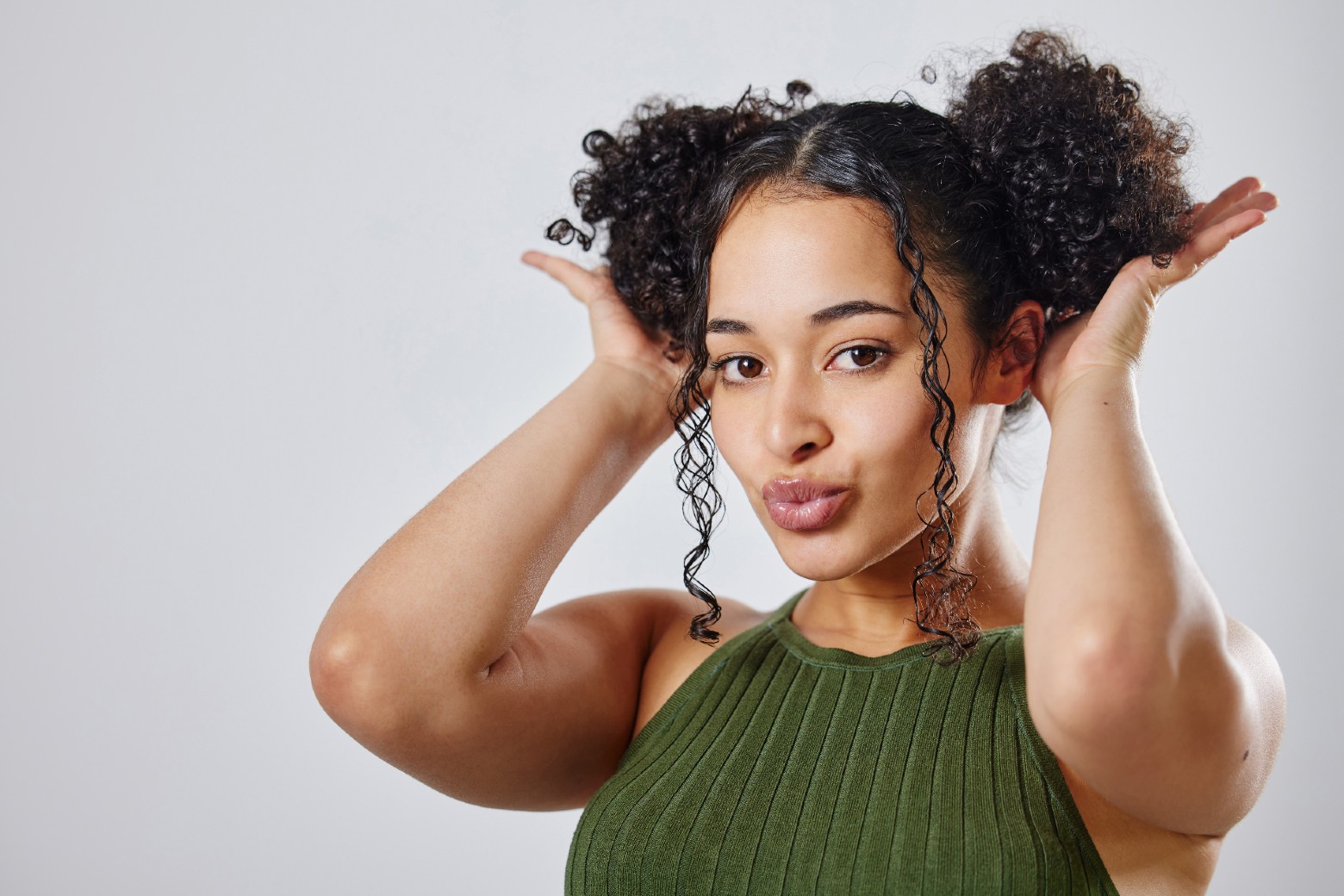
Double puffs are not only super cute, but they’re also a great protective style. You can make the basic puff by smoothing back the sides of your hair with gel. Then, tightly wrap a long hair tie around your hair. To achieve the double puff look, section your hair into two parts along your natural part and do this with both sides.
Short and Curly

Curly hair is beautiful at any length. If you’re dealing with hair damage and need a refresher, or just want to change your style, cutting your hair into a short bob is the way to go. Shorter hair is less weighed down by density, meaning your curls might get a little more bounce.
What Hair Products Should You Use On 3c Hair?
In a market full of hair products, it’s challenging to figure out what’s right for your hair. But the best hair care product decisions are made based on three factors: porosity, elasticity, and curl variance. Knowing where your hair falls in these three aspects will help determine what products actually suit your hair needs.
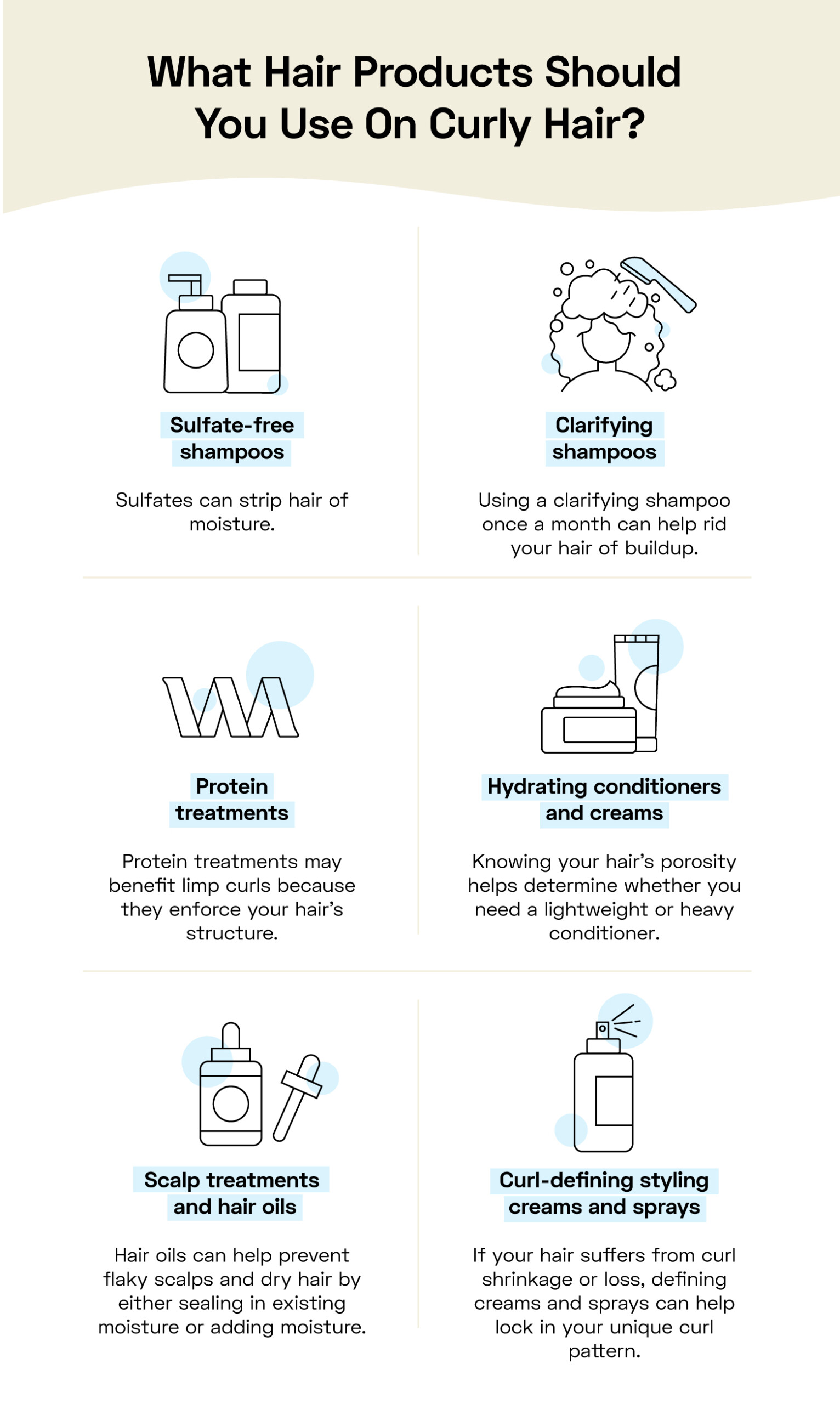
Sulfate-Free Shampoos
Sulfate-free shampoos are especially important for 3c hair because it’s so delicate and prone to dryness. Sulfates are the ingredients in shampoos that strip your hair of its natural oils. Sulfate-free shampoos provide a wash without overdrying.
Clarifying Shampoos
Clarifying shampoos go an extra step above regular shampoos. They clean more deeply, getting rid of buildup from both natural oils and product residue, helping to balance out all the conditioning products 3c hair needs.
Some people swear by apple cider vinegar as a natural clarifying rinse for curly hair. Either way, you should clarify your hair about once a month.
Protein Treatments
Protein-based hair treatments can promote strength in delicate or damaged hair. They work by penetrating the hair shaft, helping to reconnect protein chains inside each strand. They’re often combined with deep-conditioning treatments to replenish the nutrients and moisture that curly hair is especially prone to losing.
Hydrating Conditioners and Creams
Hydration is key to healthy 3c hair. Deep conditioning, leave-in conditioners, hair butters, and creams, containing ingredients like shea butter and aloe vera, help replace and lock in moisture, while also making hair easier to detangle. The drier or more prone to tangling your curls are, the heavier the conditioner you’ll need.
Scalp Treatments and Hair Oils
Hair oils, like jojoba and castor oil, help lock in moisture between washes or conditioning sessions. Using these lighter-weight oils can help prevent the oily build-up that sometimes happens with low porosity hair. You can use these after your leave-in conditioner following a wash, or in between washes on days when your hair needs some added moisture and shine.
Curl Defining Styling Creams and Sprays
Curl-defining styling products bring out curl definition, keeping your curls lively, bouncy, and shiny. They can help reduce frizz without sacrificing your natural hair texture and body. These are great for styling after a wash, or between washes when you need a little bounce.
Do’s and Don’ts for Curly Hair Types
If all that information is overwhelming, don’t worry — let’s boil it down to some key takeaways. Here are the most essential care tips for how to treat your curly hair.
Do: Protect Your Curls at Night
Protecting your curls at night with a protective style like a bun, or a silk bonnet, pillowcase, or scarf, can reduce breakage and damage. It also helps you maintain styles longer by protecting your hair from frizz that can happen when you toss and turn or just rub up against the pillow. Swapping out your pillowcases for silk ones can also help, but covering your hair with a bonnet or cap is the best way to ensure your curl definition is protected.
Do: Consider the LOC Method for Moisture
The LOC method is a proven hydration technique for curly hair. It involves layering moisturizers, by applying:
- Liquid to hydrate hair
- Oil to lock in moisture
- Cream to prevent moisture loss
While the types and amounts of products you use can vary based on your personal hair needs and hair texture concerns like dryness and hair porosity, this method can help make sure your hair stays fully hydrated.
Do: Consider Using Perm Rods to Enhance Your Curls
Tools like perm rods or twist-out styles can enhance curl definition. For a more DIY method of promoting your curl definition, try finger curling with a styling product after your next wash.
Don’t: Touch Your Hair Constantly
While using your hands or fingers in styling can be sometimes helpful, there is such a thing as touching your curly hair too much. Playing with curls too often can affect your overall hair health by causing frizz, breakage, and making it more difficult to maintain your hairstyle.
Don’t: Use the Wrong Products for Your Hair Texture
The hair products you use really do matter. The best products for your hair texture are also going to be the best for your hair health. When shopping for hair products, keep your hair porosity, elasticity, and curl variance in mind.
Conclusion
If you’re struggling to maintain your 3c hair, these hair care tips can help get back to healthy, bouncy, shiny curls in no time! If you want more personal advice or are looking to change up your style, StyleSeat has you covered. Use our search tool to find and book a stylist near you.


